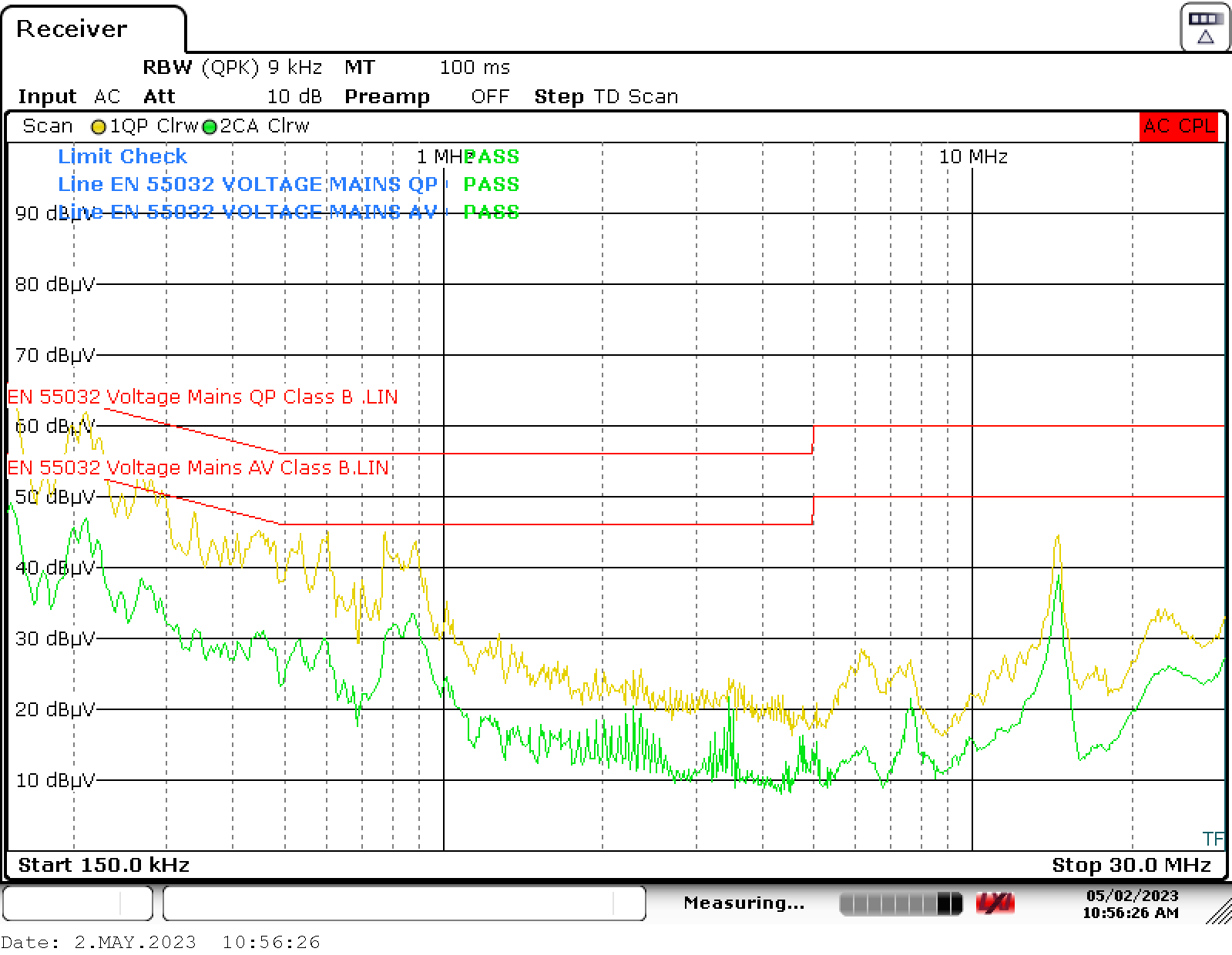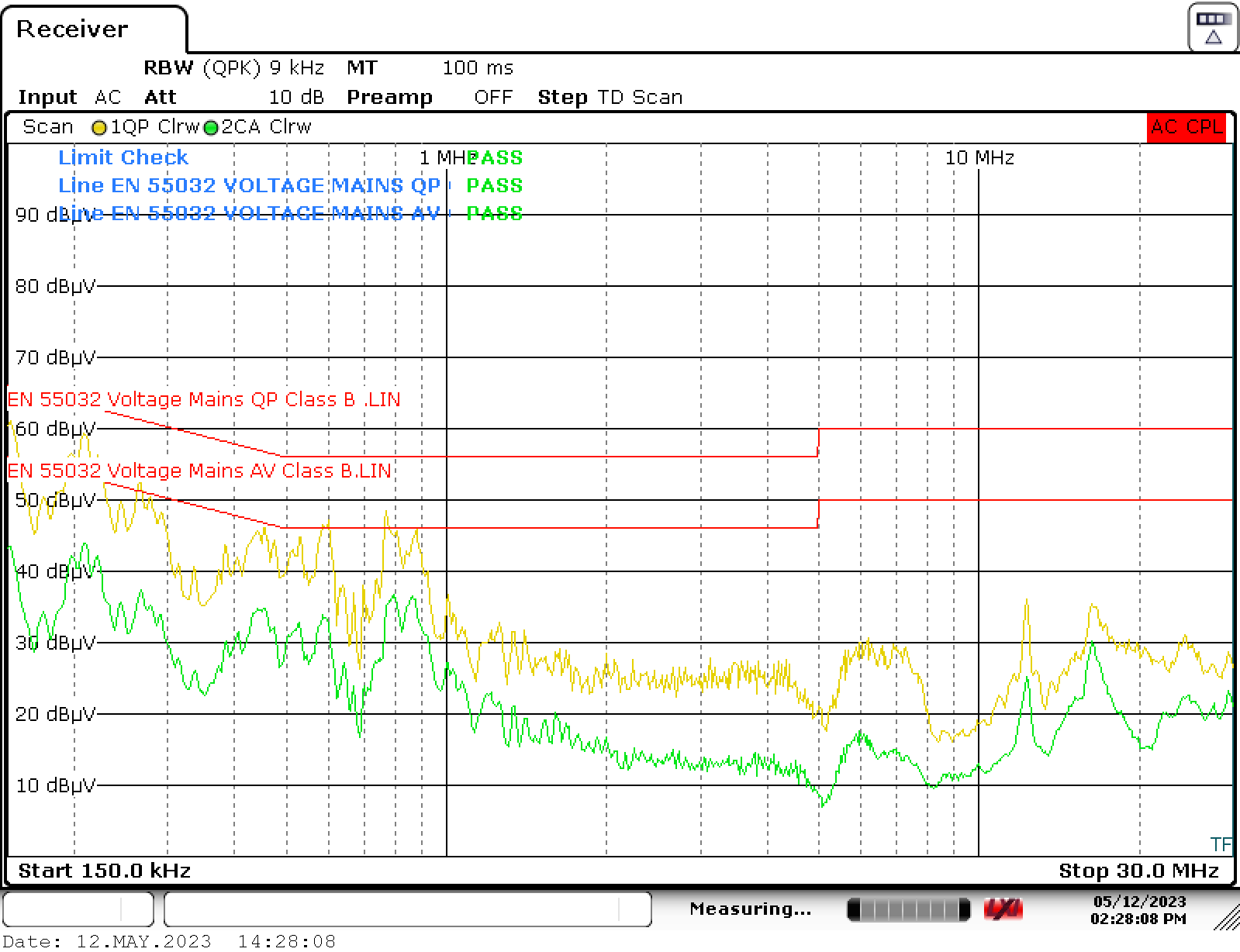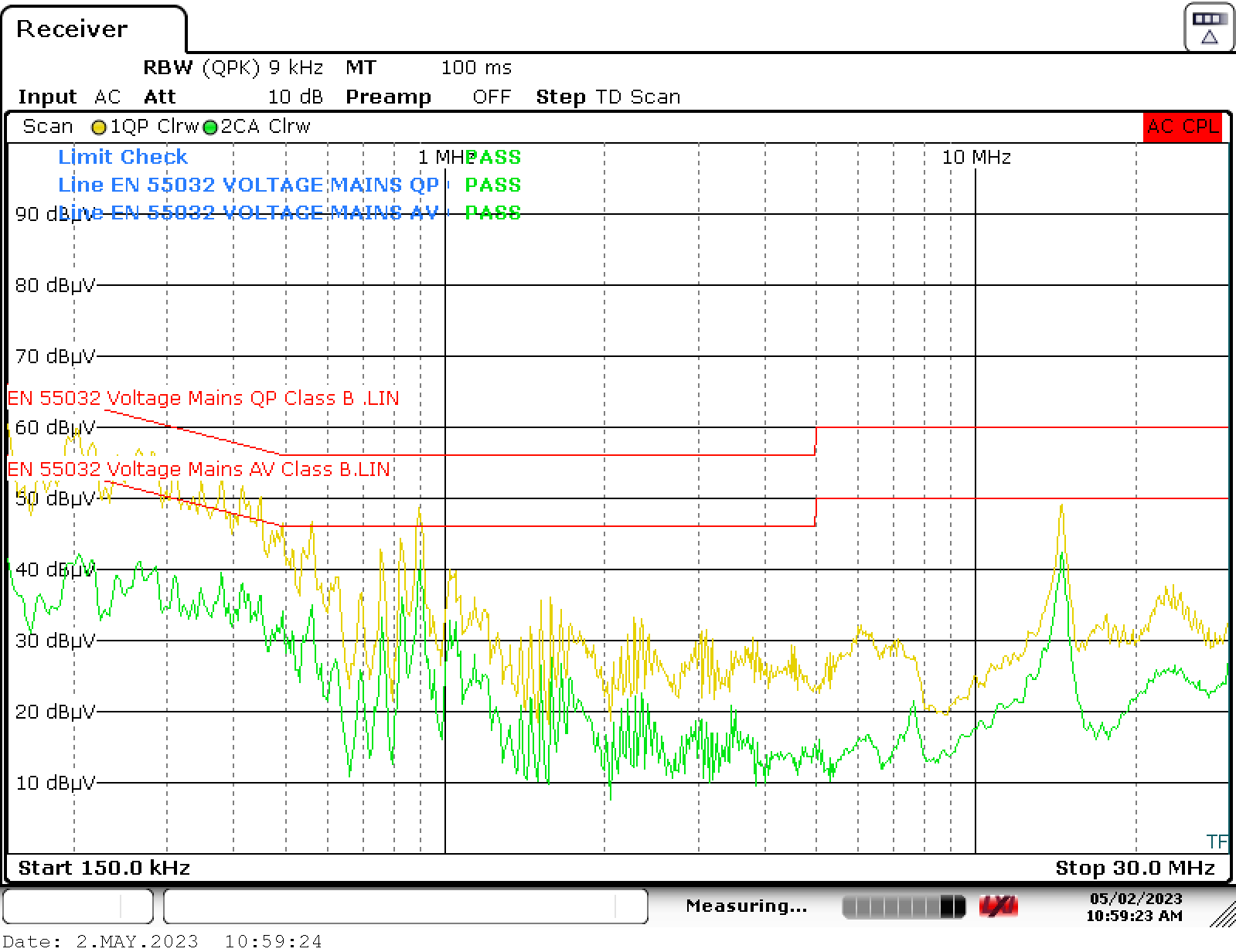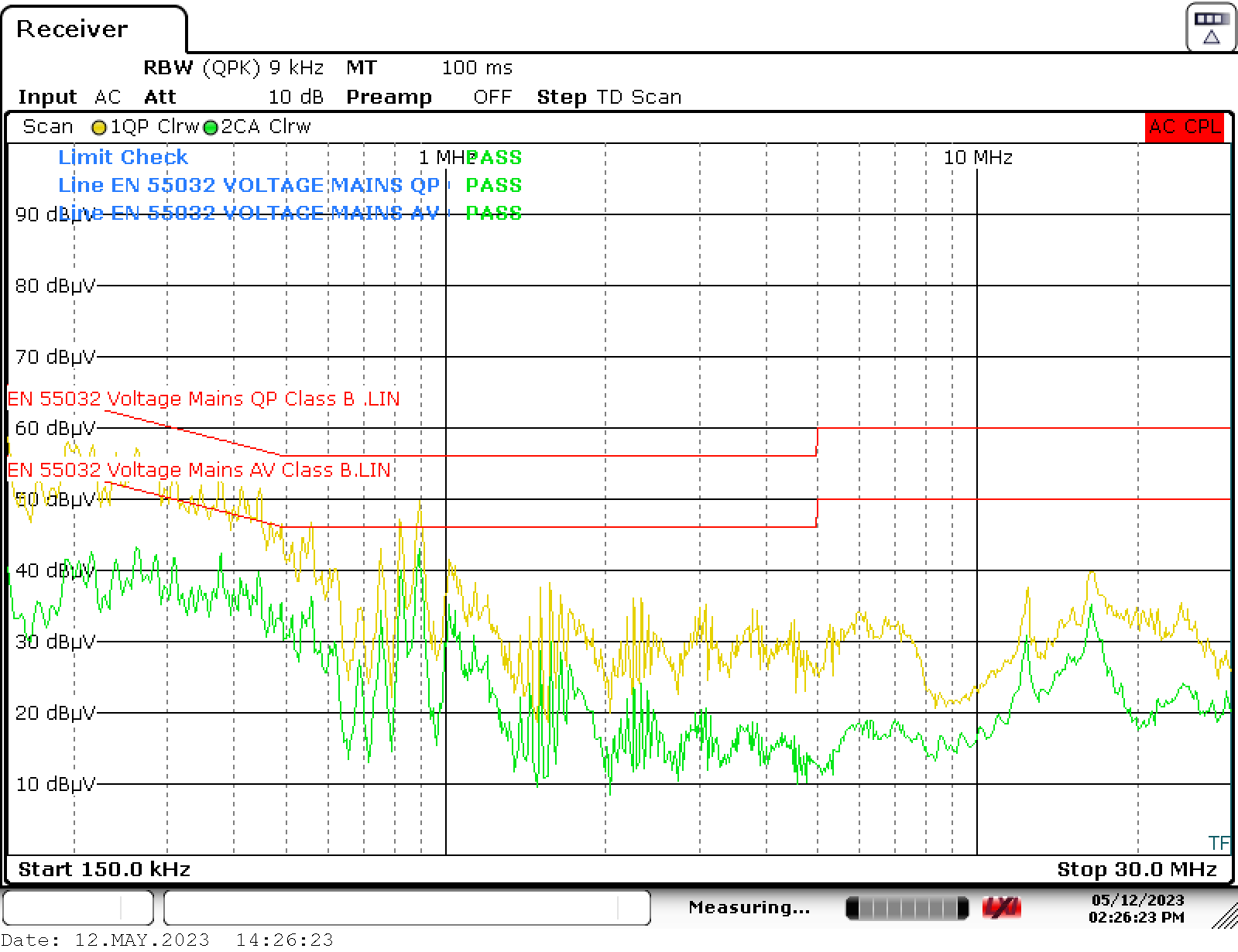TIDUDC0A march 2017 – may 2023
3.5 Conducted EMI
The following conducted emissions measurements were taken using both quasi-peak detector and average peak detector methods (yellow and green traces, respectively). The measurements are compared to the CISPR-32 Class B regulations for quasi-peak and average tests. For these tests the 12-V output was loaded to 1-A with a resistive load. EMI tests were conducted with the secondary-side ground shorted to earth ground.
 Figure 3-7 Measurement With 120-VAC, 60-Hz
Input
Figure 3-7 Measurement With 120-VAC, 60-Hz
Input
Figure 3-8 Measurement With 120-VAC, 60-Hz Input, Line Neutral Flipped
 Figure 3-9 Measurement With 230-VAC, 50-Hz
Input
Figure 3-9 Measurement With 230-VAC, 50-Hz
Input
Figure 3-10 Measurement With 230-VAC, 50-Hz Input, Line Neutral Flipped